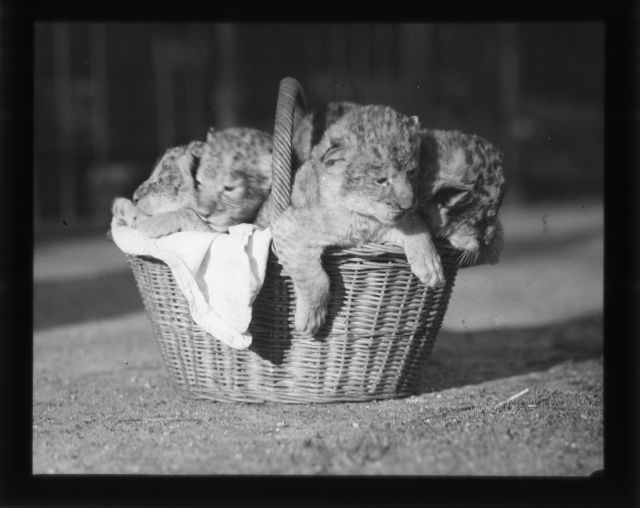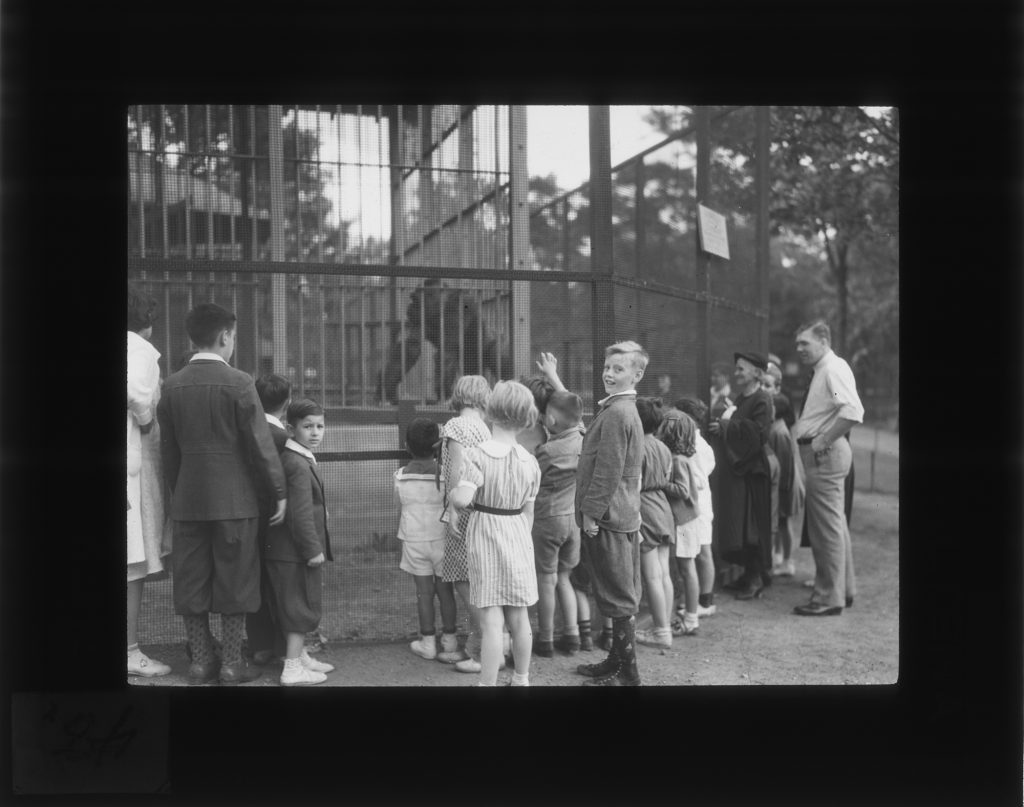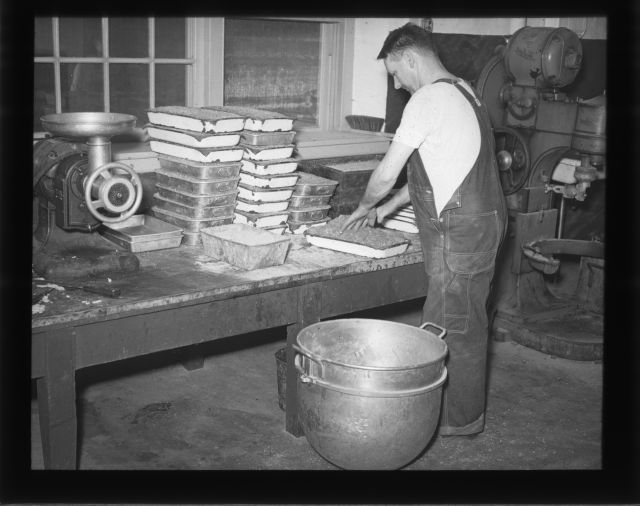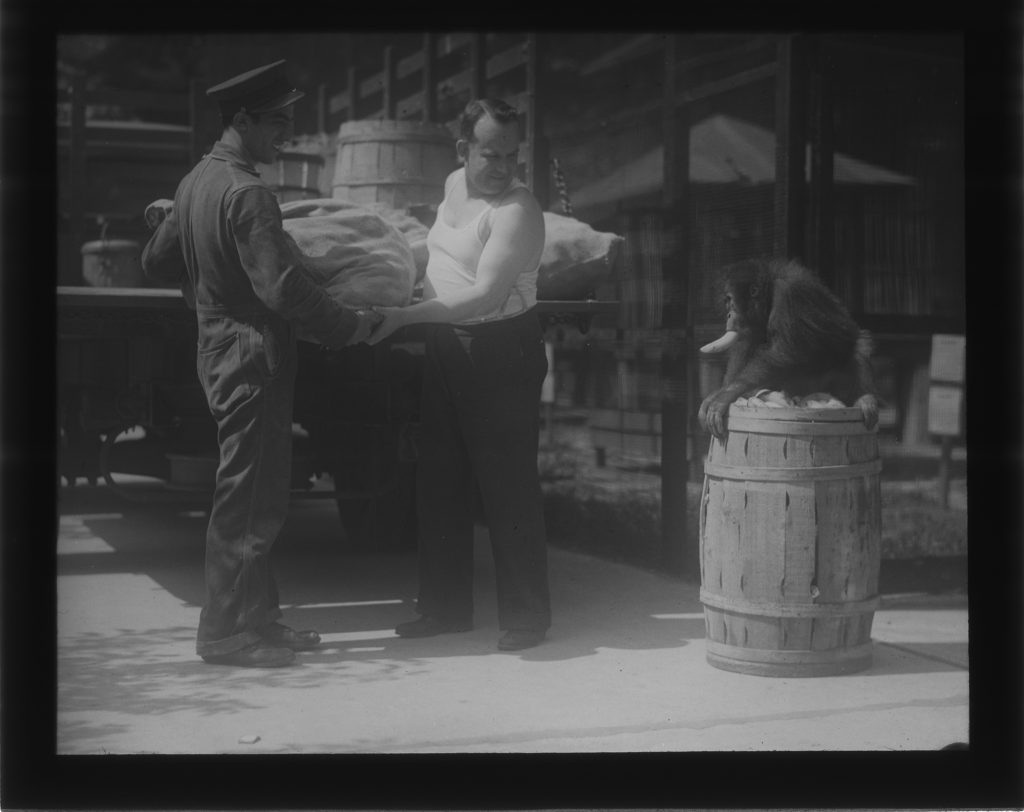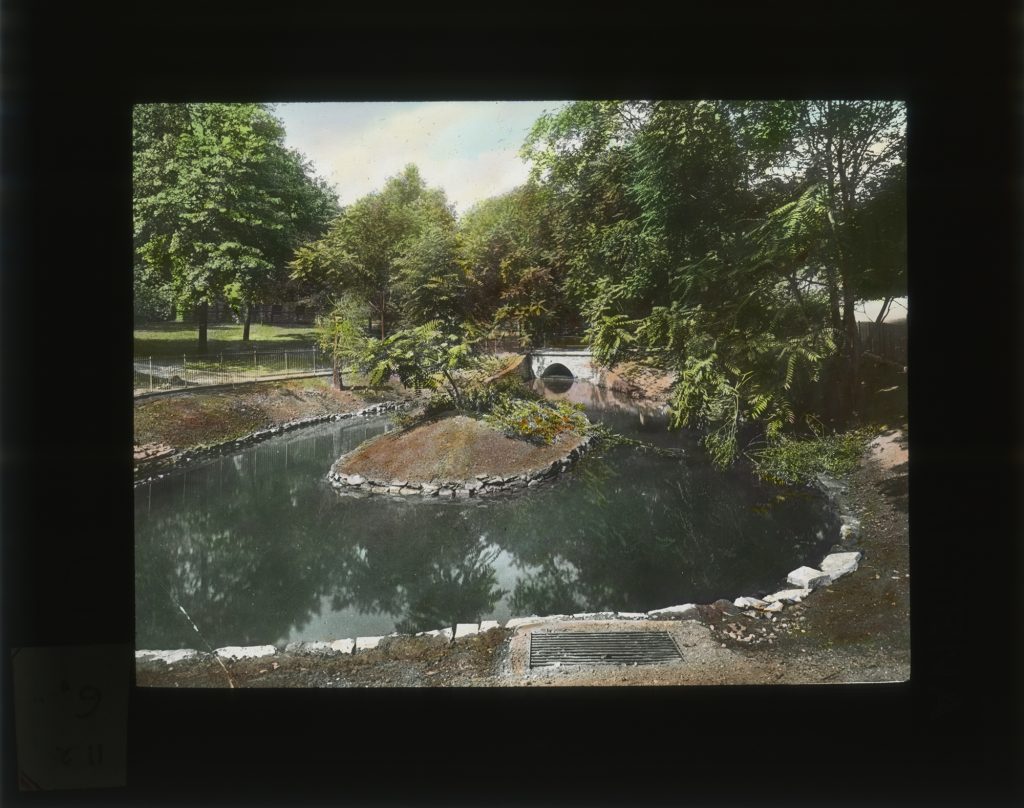One of the notable aspects of the Philadelphia Zoo (the Zoological Society of Philadelphia) archives in Temple University Libraries’ Special Collections Research Center, is its rich photographic materials, which include approximately 200 lantern slides dating from 1880 to 1936, used to help educate and advance the mission of the Zoo. Some of these slides were featured in a presentation at the Wagner Free Institute’s Annual Lantern Slide Salon, on October 13, 2016.
The earliest lantern slides depict the nineteenth-century Zoo, its buildings, grounds, and animal attractions, while the slides from the 1930s document both scientific advancement and a push for change in animal housing. Breeding and collecting remained in the forefront, great strides were made in nutrition, and the iron-barred cages of the nineteenth century began to disappear, as new, natural, open-air habitats were constructed.
Later slides document the Zoo’s Penrose Research Laboratory which made early strides in the study and prevention of diseases effecting animals in captivity, and the lab’s pioneering work in nutrition. The Zoo discovered that disease, early mortality, and low fertility affecting the animals was directly linked to nutritional deficiency. To combat this, the Penrose Lab developed the Philadelphia Zoocake, which was “a mineral and vitamin rich concoction…” formulated from corn meal, ground meat, ground vegetables, eggs, fat, molasses, salt, and baking powder. By 1936, the Zoo tested its new dietary program, including the zoocake, and saw dramatically increased general health. Greater fertility and diminished mortality rates were also noted. In fact, some of the animals went on to break records in terms of longevity in captivity.
In addition to the strides in nutrition, labor provided by Depression-era federal work relief programs kept things moving forward in other areas. In the 1930s, workers for the Works Progress Administration repaired the buildings and grounds, helping to advance how the Zoo housed and exhibited animals. Where barred cages and cell-like enclosures were the norm for the nineteenth century zoo, the twentieth century zoo sought to remove the bars and to create habitats that resembled the animals’ natural environments. This offered better living space for the animals and more thrilling exhibitions for visitors.
In 1936, the Citizens Committee for a Free and Modern Zoo was formed to ascertain public interest in the Zoo and campaign for public funding to make the Zoo a free attraction and finance continued improvements. The committee used images from other zoos’ more modern animal exhibits to excite the public about the proposed changes at the Philadelphia Zoo. Such images were coupled with pictures of caged animals under tag line, “Iron Bars a Prison Make,” to underscore the need for this important change in zoo-keeping practices. While the ground work was laid in the 1930s, it wasn’t until after World War II that the city answered the call and appropriated one million dollars to help the Zoo realize its vision.
— Courtney Smerz, SCRC Collection Management Archivist
